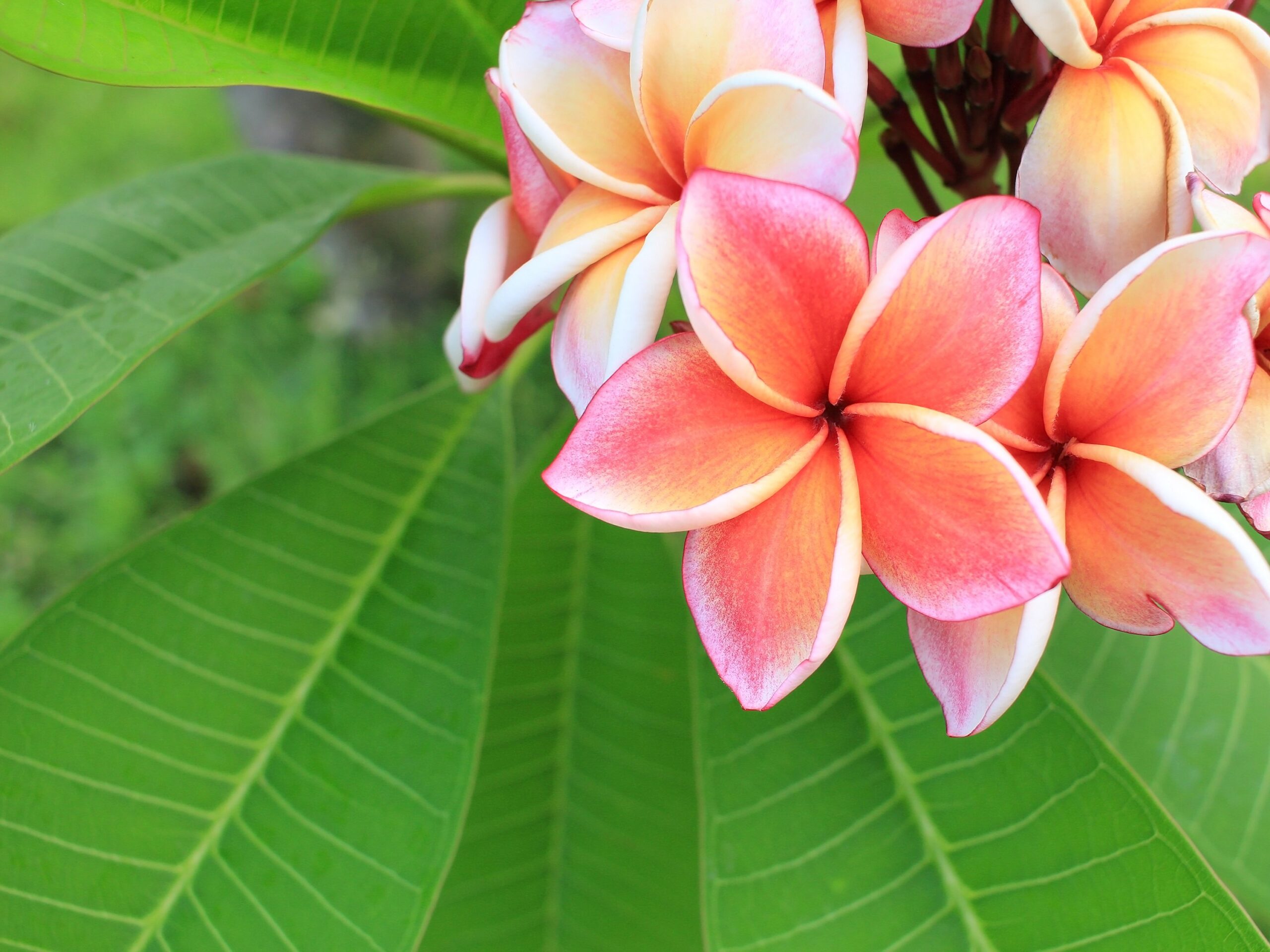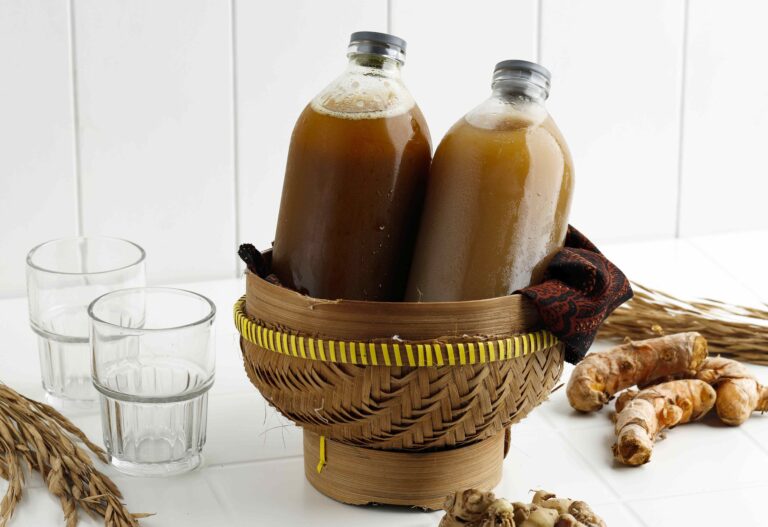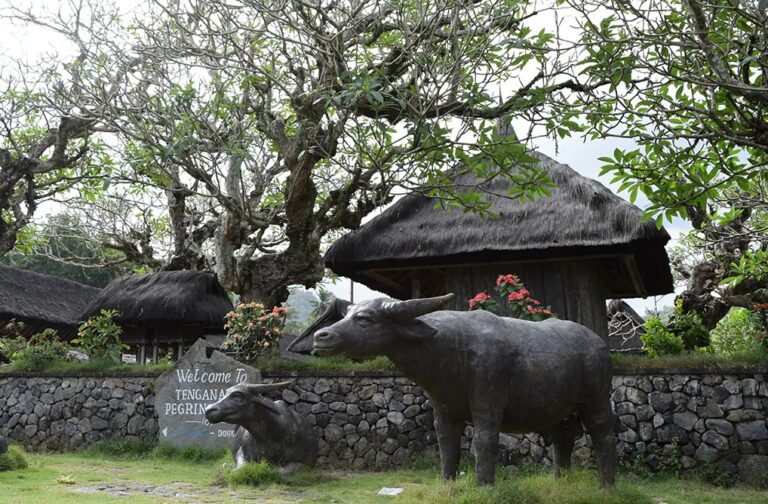Balinese culture absolutely adores plants and flowers and they are used both as decorative material as well as ceremonial material throughout the island.
We’ve got a quick guide to some of the most common and popular plant species in Bali for you.
The 12 Most Popular Garden Plants And Ornamental Plants In Balinese Gardens
Bunga Jepun/Bunga Kamboja (Frangipani)
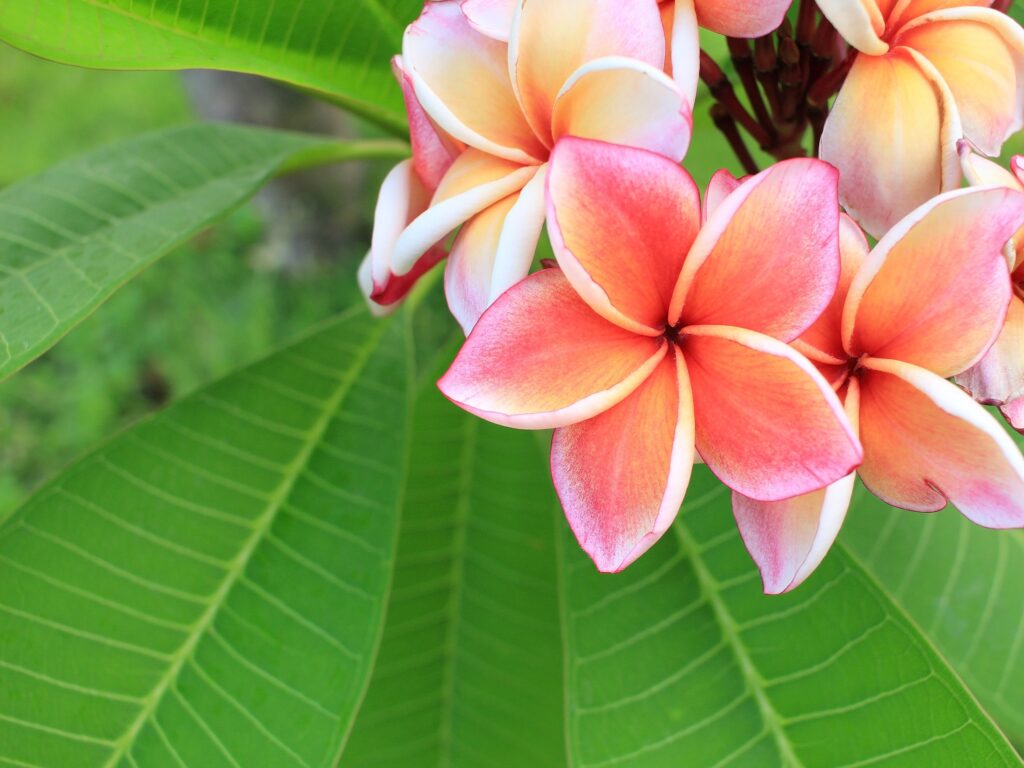
The most common Balinese flower of them all is almost certainly the “jepun” which is what we know as “frangipani”.
However, “local flowers” might be stretching it a bit as this species is endemic to most of the tropics and is a popular choice of ornamental plant pretty much everywhere.
The Balinese incorporate it into pretty much every ceremonial procession and grow it in their gardens.
The plant is commonly used in makeup and scented products thanks to its very pleasant scent.
Adenium Obesum
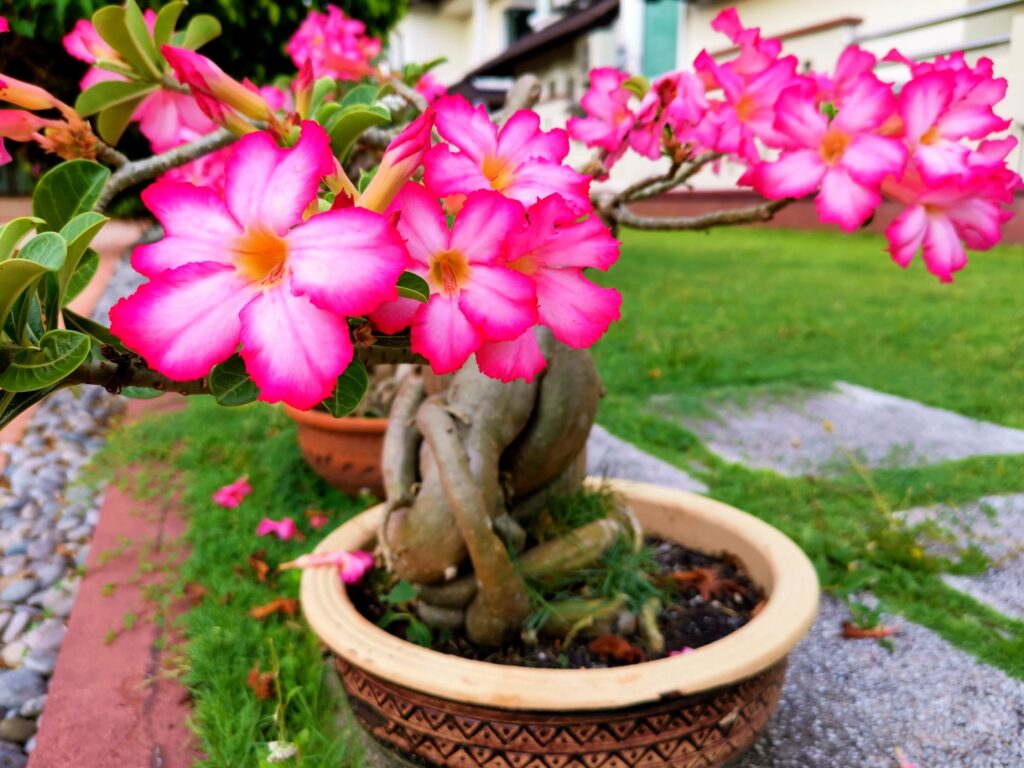
Interestingly, this poisonous species is actually native to African and Arabian regions of the globe and has made its way to Bali over the years.
The almost flamingo flower is one of the most popular garden plants on the island but is not one of the flowers considered traditional for use in ceremonies or at temples.
It might feature in exotic arrangements at your local florist but you won’t see it while people are conducting Balinese daily prayers.
Anthurium
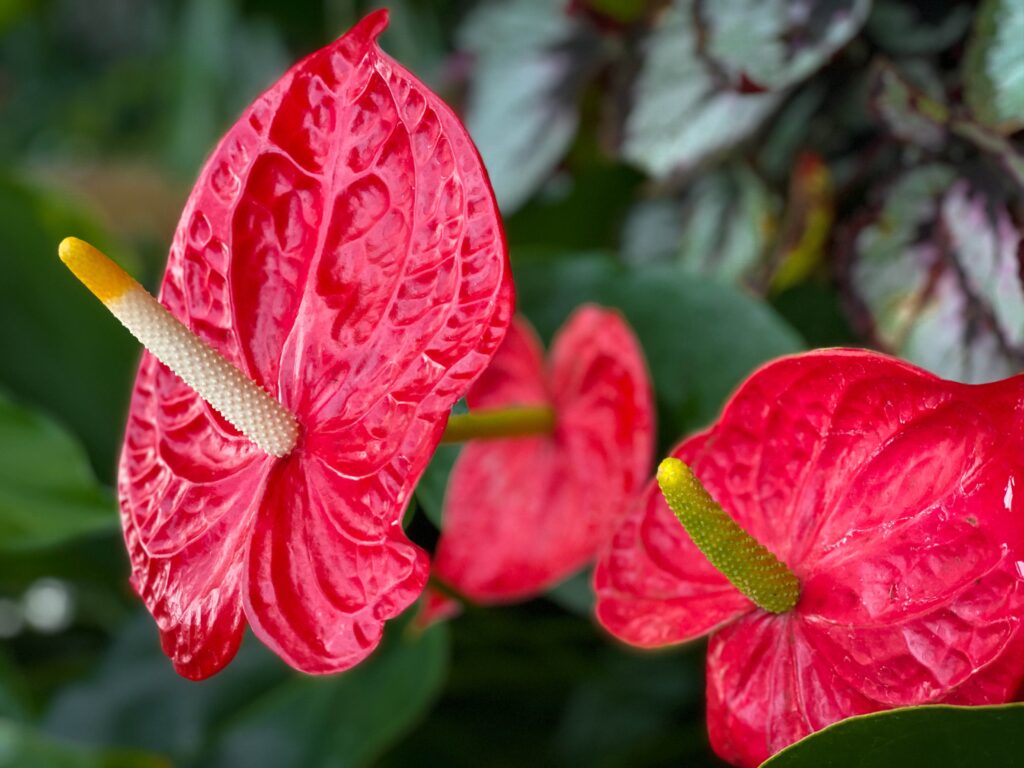
This attractive pink species actually comes from the Americas (it’s native to Mexico all the way down to Argentina and can even be found in Central America and the Caribbean!)
What makes them popular is that the Anthurium species can be cut and then used in a floral arrangement, the blooms are very hardy in the climate and may last up to two weeks!
You can find these plants in gardens all over Bali too.
Bougainvillaea
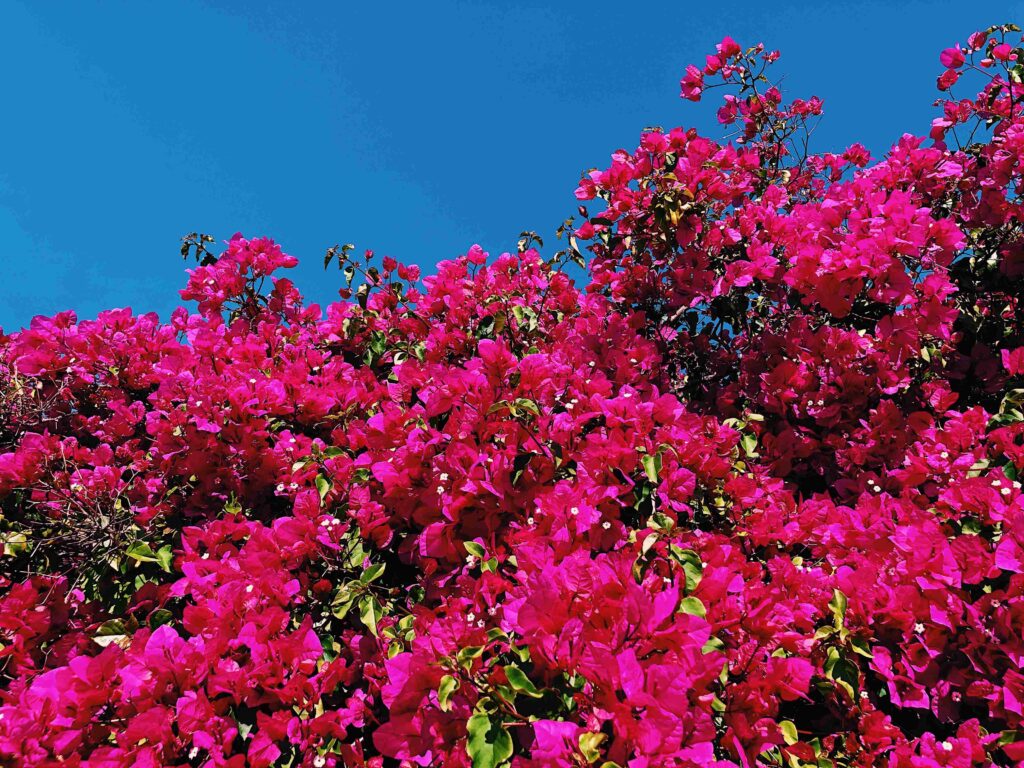
These attractive simple waxy flowers come in three different forms from dainty orange-yellow types to pink or even white.
They are thorny ornamental vines and aren’t commonly used in ceremonies due to the issues with handling the plants.
They are not a local species, however, and in fact, hail from South America and, in particular, Argentina, Brazil and Peru!
Champaca/Cempaka
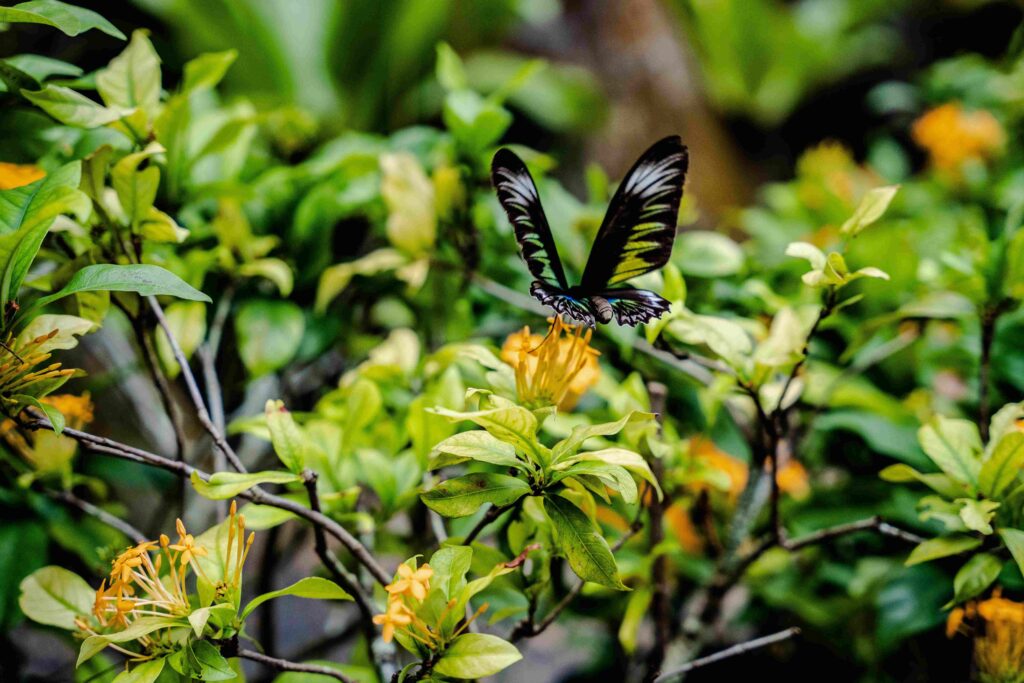
This is one of the most popular plant species in Bali and the fragrant flower is very popular in aromatherapy for making essential oils and other spa products.
It’s a very soothing fragrance that really makes you feel relaxed and calm when you inhale it.
It should come as no surprise that this is a very popular plant with the local temples and while it is quite common, the market price can spike drastically during festivals and other times of high religious demand.
Euphorbia
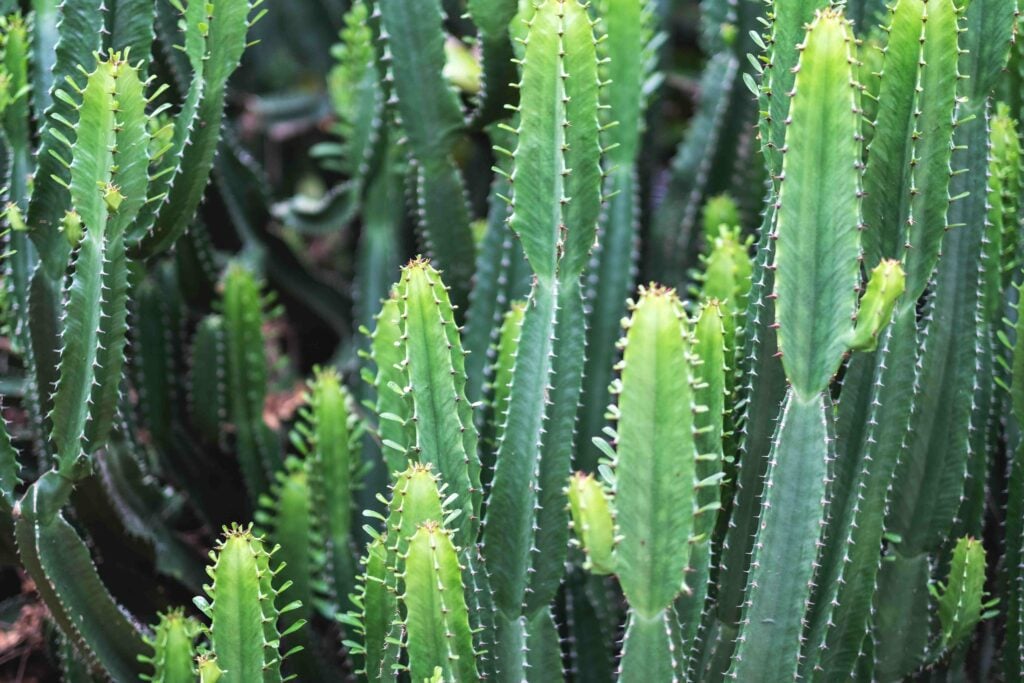
This plant looks rather like a cactus and it has a very similar resilience in the face of heat and arid soils.
This will come as no surprise when you realize that it’s not a native species but rather was brought to Bali from the deserts of Southern Africa and from Madagascar!
Their thorns are quite unpleasant if they get pushed into your skin and you should handle these attractive plants with some care.
They do not have any major use in religious ceremonies because of the nature of the thorns.
Gomphrena
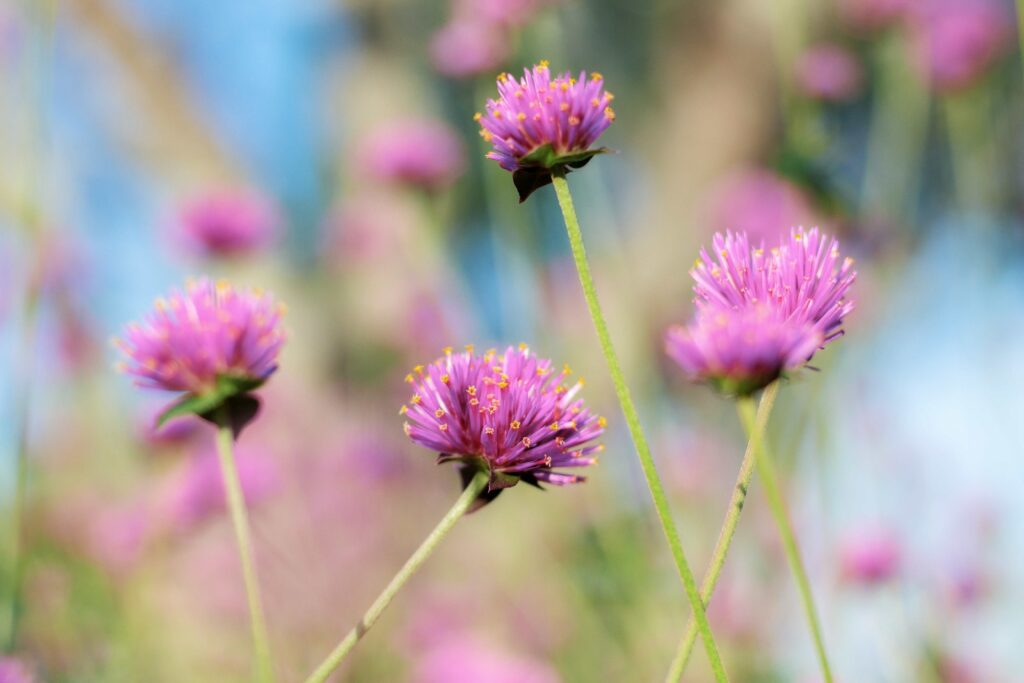
If you want a plant that’s absolutely beloved of Hindu temples everywhere then the Gomphrena would be it.
The Balinese call it “Bunga Ratna” and it grows just about everywhere, not just in the local gardens but even in the ditches around the rice paddies!
There are three colours of these flowers but, by far, the most desirable are the fuschia-coloured blooms.
They don’t work very well in bouquets though as the dainty stem is far too easy to break.
You can dry the Gomphrena for its aroma but the petals lose their colour when exposed to any degree of heat.
Heliconia (Birds of Paradise)
One of the most popular flowers for decorative use in Bali is the Heliconia or “Birds of Paradise”.
The blooms are very noticeable due to their bold reds, yellows and oranges and they are wonderful for use as cut flowers.
You can find them in the local temple, for certain, but also in cafes, hotels, and restaurants throughout the land.
They do quite well after being cut but won’t last forever.
Hibiscus Flower
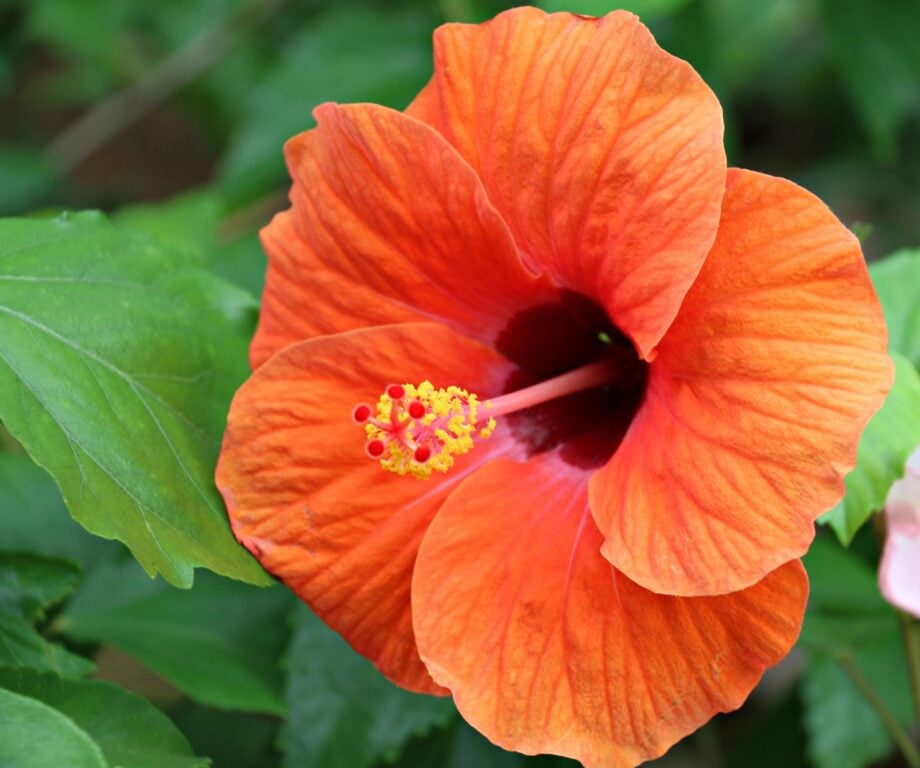
Hibiscus looks quite a lot like frangipani and it’s often found on Hindu statues across Bali for religious decorative purposes.
The plant is native to the tropical regions of the world and species can be found as far apart as India and Hawaii!
One of the more interesting properties of this plant is that it can be dried and used to make tea. It’s very high in Vitamin C, apparently.
Lotus
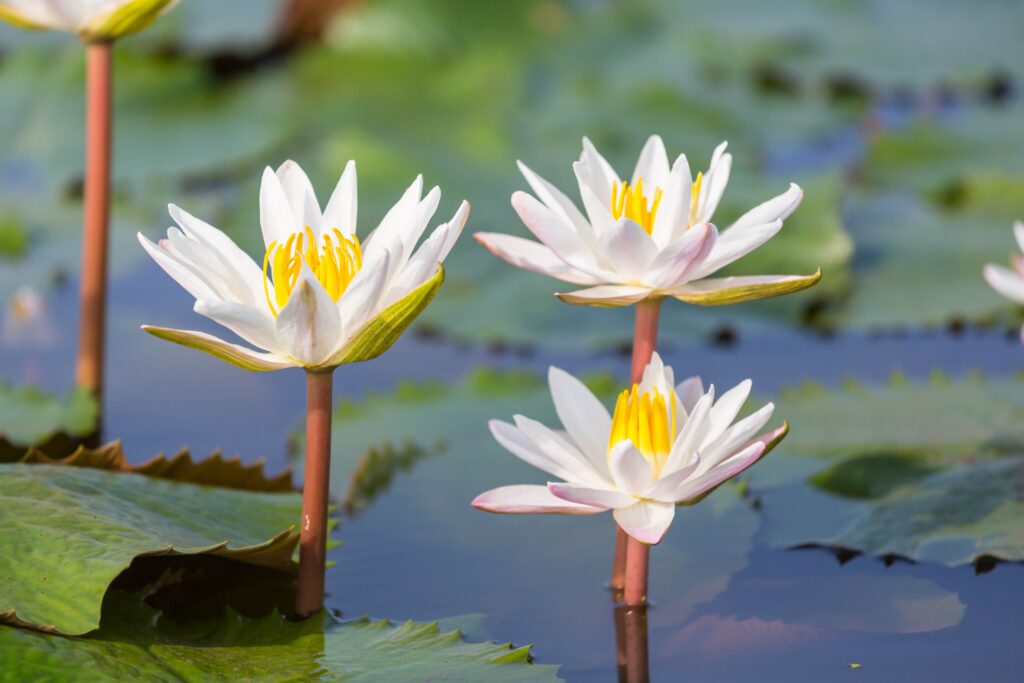
The lotus flower is one of the most recognizable sights of Southeast Asia and the leaves grow from the base of whatever pond the plant is found in.
The flower opens for 2-3 days before withering away. Interestingly, you can use the lotus pods in floral arrangements both in fresh and dried forms.
Marigold Tagetes/Gemitir
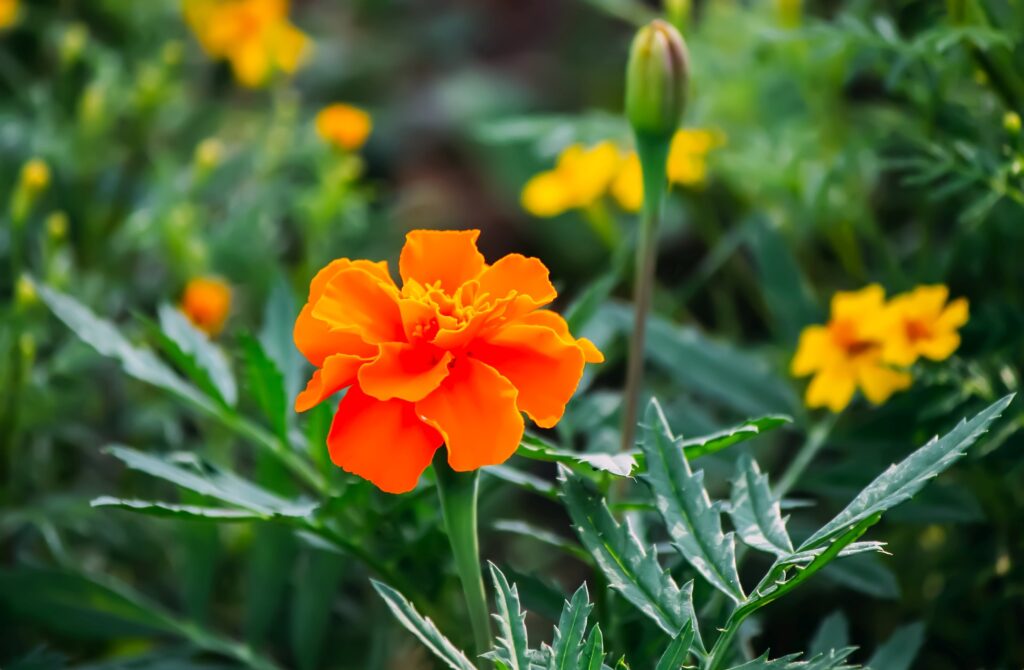
If you see garlands of plants hung on Balinese statues then it’s usually the Marigold Tagetes.
The stemless blooms also look very attractive when floating in water but they don’t work very well in floral arrangements.
Ylang-Ylang
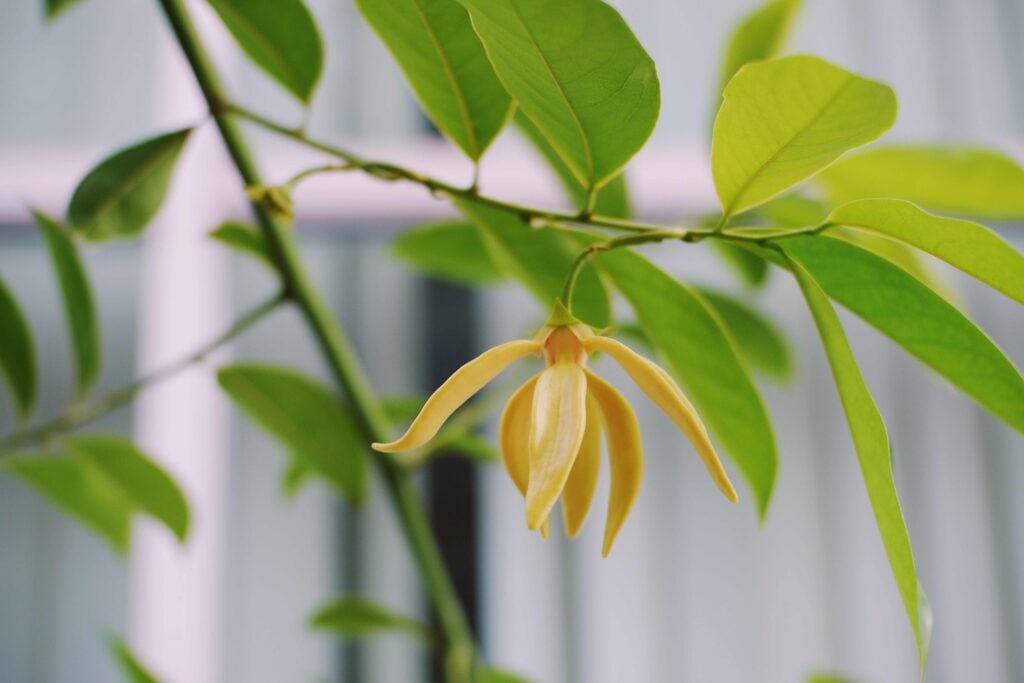
This wonderfully scented plant is native to Indonesia, Malaysia, the Philippines and also to India.
Its primary value is the fragrance which is extracted for use in essential oils and other beauty products.
What Plants Are Used In The Balinese Garden?
There are many traditional Balinese flowers and plants but some of the more common Balinese flower types include frangipani, ylang-ylang, marigolds, lotuses, hibiscuses, and heliconia.
Some of these traditional Balinese flowers are grown as ceremonial flowers for use in different rituals and ceremonies at the local temples.
What Plants Are On The Beach In Bali?
Beaches see a variety of tropical plants and mostly they tend to be palm trees or similar large plants because salt water isn’t always conducive to the longevity of smaller plants.
However, the pandanus beach plant (sometimes known as “Coastal Screwpine”) is an attractive addition to many Balinese beaches.
What Is The Flower Of Bali?
The signature Balinese flowers are “jepun” (or “frangipani” as most Westerners will know them).
The vibrant hue of this ubiquitous Balinese flower means they are popular for religious ceremonies, and offerings, and just as decorations around the home and local nurseries never have any problem getting hold of these plants.
The cut flowers have a soothing scent and this signature flower is also used in many different cosmetic products.
What Is The Most Popular Plant In Indonesia?
The most popular plant in Indonesia is the “melati putih.” It is, unofficially, the Indonesian national flower and has been popular ever since the Republic of Indonesia was formed.
It is also known as “Arabian Jasmine” or “Jasminum sambac” and due to its distinctive (and pleasant) aroma, it has been used in rituals throughout Indonesia since the dawn of time.
You may also find that the “Flower of Charm” or “Moon Orchid” is a very popular plant and it is, generally, considered to be the most beautiful plant on the archipelago by the locals.
However, the most prized flower in Indonesia is the Padma Rakasasa Rafflesia (Rafflesia arnoldii) which is one of the rarest plants here and it was chosen by the nation as one of the three floral emblems of Indonesia on the World Environment Day back in 1990!
Balinese house gardens tend to focus on Balinese flowers and native species, they are often found among Balinese stone statues to help break up the environment.
As you would expect all native species here are tropical flowers and the beautiful Balinese-style gardens are able to bloom for much of the year thanks to the weather.
The best way to learn about Balinese flowers and to separate the traditional Balinese flowers from the non-traditional Balinese flowers is either to visit the Botanical Gardens or to talk to a Bali florist.
You could even find a sustainable florist and engage them to make some lovely floral bouquets and floral arrangements for your time in Bali!

